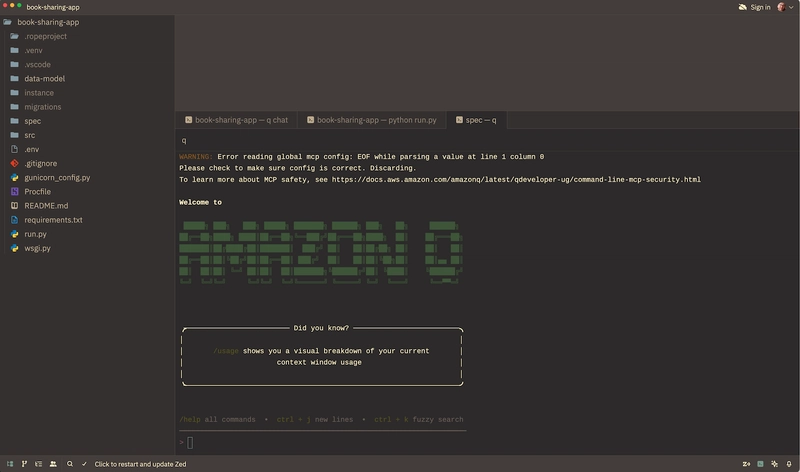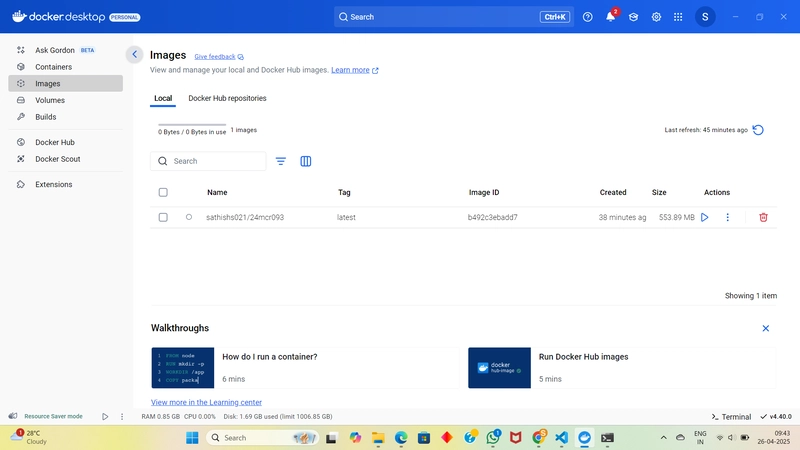Understanding HTTP Status Codes: Practical Insights for Developers
In the world of web development, HTTP status codes are the backbone of communication between clients (like browsers or mobile apps) and servers. These codes provide vital clues about the success or failure of HTTP requests—whether it's loading a page, sending data, or interacting with an API. Understanding these codes not only improves debugging but also enhances user experience and application stability. Here’s a practical guide to the most common HTTP status codes and how they are used in programming and real-world deployment: 1. 200 OK: Request Succeeded This is the most common and desirable response. It means the request was successful and the server returned the expected data. Use Case in JavaScript (Fetch API): fetch('https://api.example.com/user/123') .then(response => { if (response.status === 200) { return response.json(); } else { throw new Error('Failed to fetch user'); } }) .then(data => console.log(data)) .catch(error => console.error(error)); Importance in Development: Confirms that the server processed the request. Critical for conditional rendering of UI based on success (e.g., display profile after successful fetch). 2. 201 Created: Resource Created Successfully This status is returned when a new resource has been successfully created on the server (commonly after a POST request). Use Case in Express.js (Node.js Backend): app.post('/users', (req, res) => { const newUser = { id: 1, name: req.body.name }; // Assume the user is saved in the database here. res.status(201).json(newUser); }); Client-Side Response: fetch('/users', { method: 'POST', body: JSON.stringify({ name: 'Alice' }), headers: { 'Content-Type': 'application/json' } }) .then(res => { if (res.status === 201) return res.json(); throw new Error('User not created'); }) .then(data => console.log('Created:', data)); Importance in Real-World Deployment: Ensures confirmation of new entries (e.g., registrations, posts). Helps frontend give appropriate success feedback like toast messages: "Account created successfully!" 3. 400 Bad Request: Invalid Request Data Indicates that the server cannot process the request due to client-side issues like malformed JSON or missing fields. Use Case in Express.js: app.post('/login', (req, res) => { const { username, password } = req.body; if (!username || !password) { return res.status(400).json({ error: 'Username and password required' }); } // Continue with authentication... }); Frontend Handling: fetch('/login', { method: 'POST', body: JSON.stringify({ username: '' }), // missing password headers: { 'Content-Type': 'application/json' } }) .then(res => { if (res.status === 400) return res.json(); }) .then(err => console.error('Validation error:', err)); Why It Matters: Helps developers quickly identify bad inputs during testing. Prevents unnecessary processing on the server. 4. 404 Not Found: Resource Not Found This occurs when the requested resource doesn’t exist on the server. Example in Node.js: app.get('/products/:id', (req, res) => { const product = database.findById(req.params.id); if (!product) { return res.status(404).json({ error: 'Product not found' }); } res.json(product); }); Real-World Significance: Prevents confusion when users try accessing invalid links. Enables search engines and crawlers to avoid indexing broken pages. 5. 500 Internal Server Error: Server-Side Issue A catch-all error when something goes wrong on the server that wasn’t caught or handled properly. Example: app.get('/data', async (req, res) => { try { const data = await fetchData(); res.json(data); } catch (error) { console.error('Server error:', error); res.status(500).json({ error: 'Internal server error' }); } }); Frontend Handling: fetch('/data') .then(res => { if (res.status === 500) throw new Error('Something broke on the server'); return res.json(); }) .catch(err => alert(err.message)); Why Developers Must Care: 500 errors are signs of bugs or configuration issues. Regular logging and error tracking tools (e.g., Sentry, LogRocket) should be integrated to catch and fix these. For Developers: They simplify debugging, improve API communication, and help enforce frontend/backend contracts. For Users: They ensure better feedback, smoother interactions, and less frustration when something goes wrong. In DevOps & Deployment: Proper status codes trigger automated monitoring alerts (e.g., 500 spikes), guide load balancers, and influence SEO strategies (404 pages). Mastering HTTP status codes isn’t optional—it’s a superpower in your development toolbox.

In the world of web development, HTTP status codes are the backbone of communication between clients (like browsers or mobile apps) and servers. These codes provide vital clues about the success or failure of HTTP requests—whether it's loading a page, sending data, or interacting with an API. Understanding these codes not only improves debugging but also enhances user experience and application stability.
Here’s a practical guide to the most common HTTP status codes and how they are used in programming and real-world deployment:
1. 200 OK: Request Succeeded
This is the most common and desirable response. It means the request was successful and the server returned the expected data.
Use Case in JavaScript (Fetch API):
fetch('https://api.example.com/user/123')
.then(response => {
if (response.status === 200) {
return response.json();
} else {
throw new Error('Failed to fetch user');
}
})
.then(data => console.log(data))
.catch(error => console.error(error));
Importance in Development:
Confirms that the server processed the request.
Critical for conditional rendering of UI based on success (e.g., display profile after successful fetch).
2. 201 Created: Resource Created Successfully
This status is returned when a new resource has been successfully created on the server (commonly after a POST request).
Use Case in Express.js (Node.js Backend):
app.post('/users', (req, res) => {
const newUser = { id: 1, name: req.body.name };
// Assume the user is saved in the database here.
res.status(201).json(newUser);
});
Client-Side Response:
fetch('/users', {
method: 'POST',
body: JSON.stringify({ name: 'Alice' }),
headers: { 'Content-Type': 'application/json' }
})
.then(res => {
if (res.status === 201) return res.json();
throw new Error('User not created');
})
.then(data => console.log('Created:', data));
Importance in Real-World Deployment:
Ensures confirmation of new entries (e.g., registrations, posts).
Helps frontend give appropriate success feedback like toast messages: "Account created successfully!"
3. 400 Bad Request: Invalid Request Data
Indicates that the server cannot process the request due to client-side issues like malformed JSON or missing fields.
Use Case in Express.js:
app.post('/login', (req, res) => {
const { username, password } = req.body;
if (!username || !password) {
return res.status(400).json({ error: 'Username and password required' });
}
// Continue with authentication...
});
Frontend Handling:
fetch('/login', {
method: 'POST',
body: JSON.stringify({ username: '' }), // missing password
headers: { 'Content-Type': 'application/json' }
})
.then(res => {
if (res.status === 400) return res.json();
})
.then(err => console.error('Validation error:', err));
Why It Matters:
Helps developers quickly identify bad inputs during testing.
Prevents unnecessary processing on the server.
4. 404 Not Found: Resource Not Found
This occurs when the requested resource doesn’t exist on the server.
Example in Node.js:
app.get('/products/:id', (req, res) => {
const product = database.findById(req.params.id);
if (!product) {
return res.status(404).json({ error: 'Product not found' });
}
res.json(product);
});
Real-World Significance:
Prevents confusion when users try accessing invalid links.
Enables search engines and crawlers to avoid indexing broken pages.
5. 500 Internal Server Error: Server-Side Issue
A catch-all error when something goes wrong on the server that wasn’t caught or handled properly.
Example:
app.get('/data', async (req, res) => {
try {
const data = await fetchData();
res.json(data);
} catch (error) {
console.error('Server error:', error);
res.status(500).json({ error: 'Internal server error' });
}
});
Frontend Handling:
fetch('/data')
.then(res => {
if (res.status === 500) throw new Error('Something broke on the server');
return res.json();
})
.catch(err => alert(err.message));
Why Developers Must Care:
500 errors are signs of bugs or configuration issues.
Regular logging and error tracking tools (e.g., Sentry, LogRocket) should be integrated to catch and fix these.
For Developers: They simplify debugging, improve API communication, and help enforce frontend/backend contracts.
For Users: They ensure better feedback, smoother interactions, and less frustration when something goes wrong.
In DevOps & Deployment: Proper status codes trigger automated monitoring alerts (e.g., 500 spikes), guide load balancers, and influence SEO strategies (404 pages).
Mastering HTTP status codes isn’t optional—it’s a superpower in your development toolbox.










































































































































































![[The AI Show Episode 146]: Rise of “AI-First” Companies, AI Job Disruption, GPT-4o Update Gets Rolled Back, How Big Consulting Firms Use AI, and Meta AI App](https://www.marketingaiinstitute.com/hubfs/ep%20146%20cover.png)




























































































































![Ditching a Microsoft Job to Enter Startup Hell with Lonewolf Engineer Sam Crombie [Podcast #171]](https://cdn.hashnode.com/res/hashnode/image/upload/v1746753508177/0cd57f66-fdb0-4972-b285-1443a7db39fc.png?#)





























































.jpg?width=1920&height=1920&fit=bounds&quality=70&format=jpg&auto=webp#)




















































-Nintendo-Switch-2-Hands-On-Preview-Mario-Kart-World-Impressions-&-More!-00-10-30.png?width=1920&height=1920&fit=bounds&quality=70&format=jpg&auto=webp#)












































































































-xl.jpg)





























![New iPad 11 (A16) On Sale for Just $277.78! [Lowest Price Ever]](https://www.iclarified.com/images/news/97273/97273/97273-640.jpg)

![Apple Foldable iPhone to Feature New Display Tech, 19% Thinner Panel [Rumor]](https://www.iclarified.com/images/news/97271/97271/97271-640.jpg)





































































![[Weekly funding roundup May 3-9] VC inflow into Indian startups touches new high](https://images.yourstory.com/cs/2/220356402d6d11e9aa979329348d4c3e/WeeklyFundingRoundupNewLogo1-1739546168054.jpg)





























